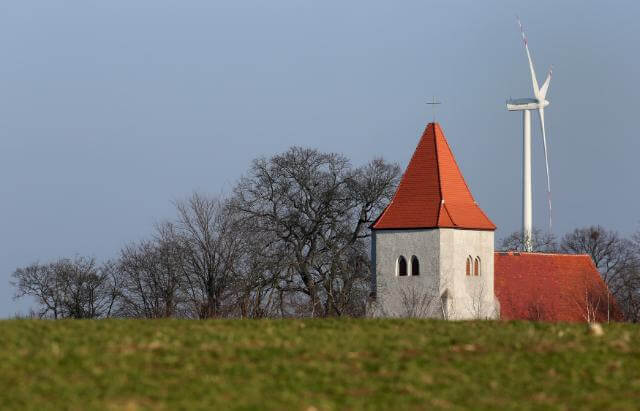The decarbonization of energy systems depends largely on the embrace of wind and solar energy.
Fortunately, the costs of solar power are falling fast and, combined with the low-cost batteries that are now available, solar has become a competitive and reliable energy source in sunny locations.
But while wind power provides more energy than solar, its usage is expanding more slowly, owing partly to opposition from politicians and local communities.
US President Donald Trump summed up the politicians’ case against wind in 2020: “It’s extremely expensive. Kills all the birds. It’s very intermittent.”
But, while none of these assertions is entirely unfounded, all are vastly overstated.
On cost, the International Energy Agency reports that, in areas with steady strong onshore winds, wind farms offer the lowest levelized costs of electricity generation – lower than even fossil fuels.
And while wind power is intermittent, it is most consistent in winter, making it a useful complement to solar, which is strongest in summer.
As for the birds, many may well die as a result of collisions with wind-turbine blades – an estimated 250,000 per year in the United States.
But one major research project found that seabirds actively avoid offshore turbines: in two years of monitoring an offshore wind farm adjacent to Trump’s golf course in Scotland, not a single bird collided with a rotor blade.
In any case, if Trump and others, like Germany’s far-right Alternative für Deutschland, are truly concerned about birds, they should be up in arms about power lines, which kill an estimated 12-64 million birds in the US each year.
And they should be truly horrified by tall buildings, which cause 988 million bird deaths each year, and wandering house cats, which kill up to four billion.
Local communities’ grievances
Local communities’ grievances appear more legitimate: a 350-foot tower with massive whirring turbine blades may well constitute a genuine nuisance for those living nearby.
But opposition often remains strong even when wind farms are required to be a certain distance from inhabited areas, as is the case in many countries, with communities citing concerns like noise and lower local property values.
Projects are often held up by protracted (and expensive) legal proceedings
Some dismiss these complaints as reflective of a self-centered NIMBY (“not in my backyard”) mentality, pointing out, for example, that higher-income communities are especially likely to oppose wind projects.
But such accusations do nothing to resolve the fundamental conflict between the demands of local property owners and the collective interest in expanding the supply of renewable energy.
Instead, projects are often held up by protracted (and expensive) legal proceedings, which can drag on for years, as they move through various courts and await costly technical and environmental appraisals.
Construction permits
According to one US survey, community opposition causes 14-month delays, on average, for wind projects.
In many cases, just to obtain construction permits takes years – as many as nine in some European Union member states.
In 2023, the EU established guidelines to accelerate approvals of renewable projects. But the real game changer on this front has been the classification of such projects as being in the “overriding public interest.”
Accelerated approvals might turn out to be a Pyrrhic victory, if they leave local communities feeling bulldozed or cheated
By changing the basis for court rulings, this designation shortens legal proceedings and makes approvals more likely.
But accelerated approvals might turn out to be a Pyrrhic victory, if they leave local communities feeling bulldozed or cheated.
Ultimately, litigation is an inefficient and potentially polarizing means of addressing the conflicting interests of local communities and the wider public.
A quicker, cheaper (in the long run), and less divisive approach, already being used across Germany, would be to compensate local land- or homeowners for the nuisance a new wind farm represents, such as by providing them with discounted energy or giving them a share of the profits.
Immediate and tangible benefits
Legend has it that, in the late 18th century, King Frederick II of Prussia was disturbed by the clatter of a windmill near his Sanssouci palace, and demanded that it be removed.
But the miller, Johann William Grävenitz, refused, threatening to take the case to the Supreme Court in Berlin. The monarch relented, in what is viewed as a triumph for the rule of law.
 Fast-track permits and the public-interest test may clear legal barriers to the expansion of wind-power capacity
Fast-track permits and the public-interest test may clear legal barriers to the expansion of wind-power capacity
But that is not what happened. According to the historical record, Grävenitz complained that the newly constructed palace blocked wind from reaching his windmill, and petitioned the king for compensation.
Frederick II agreed, approving and financing the construction of a new mill in the area.
The real lesson of the historic mill of Sanssouci is thus not that the courts should arbitrate every clash of interests, but rather that fair compensation can lead to consent.
If Europe wants more wind, it must heed this lesson. Fast-track permits and the public-interest test may clear legal barriers to the expansion of wind-power capacity, but the best way to secure durable buy-in from local communities may well be to offer them immediate and tangible benefits – not just lofty promises of climate gains.
Daniel Gros is Director of the Institute for European Policymaking at Bocconi University.